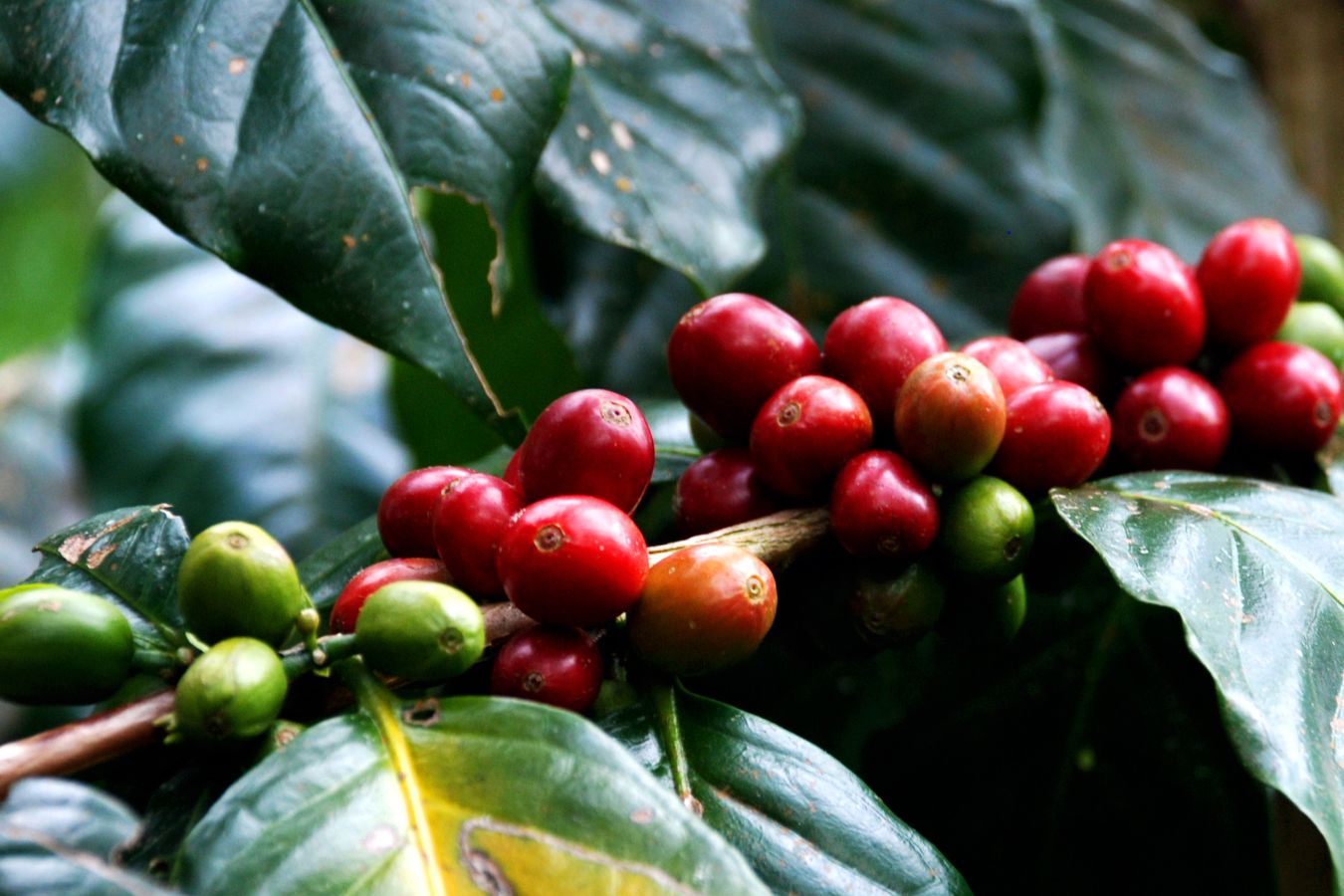
The size of the fruit varies depending on the coffee variety, but they are often the size of a tiny grape. Unlike grapes, the center seeds supply the majority of the fruit’s bulk, however, there is a thin layer of fruit flesh behind the skin.
All cherries start out green and turn a darker shade as they mature. When ripe, the skin turns a deep red color, while some trees produce yellow fruit, and a hybrid between a yellow-fruiting tree and a red-fruiting tree can infrequently produce orange fruit.
While fruit color isn’t known to affect yield, yellow-fruiting trees are frequently avoided because they’re more difficult to tell when they’re ripe. The red fruit begins out green, then changes yellow before turning red. When picking coffee by hand, makes maturity much easier to detect.
Ripeness is determined by the amount of sugar in the fruit. Which is critical when growing great coffee. In general, the higher the sugar content of the fruit, the better.
Different farmers, on the other hand, harvest their cherries at different stages of maturity. Some people believe that blending cherries at various stages of maturity can give depth to a coffee, but all of the cherries should be suitably ripe, and none of them should be overripe, since this will result in an unpleasant flavor.
FRUITS THAT ARE SWEET
When ripe, the esh of the coffee fruit is unexpectedly tasty, with a delightful honeydew melon sweetness and a light acidity. The fruits are often squeezed to make a drink, but they aren’t extremely juicy even when fully ripe, and you have to work hard to separate the esh from the seeds.
coffee fruit health and good.
The Seed
The coffee bean or seed is made up of numerous layers, the majority of which are eliminated during processing, leaving only the bean we grind and brew. The seed has a protective outer coat called parchment and a thinner layer called silverskin wrapped around it.
Most coffee cherries have two seeds that face each other inside the berry and flatten out on one side as they mature.
Peaberries are formed when only one seed inside a berry germinates and grows. These seeds, which account for around 5% of the crop, have a rounder surface on one side rather than a flattened one.

Some people believe that these peaberries have special properties or that they roast differently from the flattened beans since they are segregated from the rest of the crop.
Consuming coffee fruit and buying coffee fruit
Antioxidants and polyphenols abound in it. Antioxidants and polyphenols, such as chlorogenic acid, abound in coffee berries. They defend your body against free radical damage, which can cause oxidative stress in cells and lead to disease.
The coffee fruit has the ability to safeguard your brain. Studies have demonstrated that coffee protects the brain from Alzheimer’s disease, dementia, and other age-related disorders.
The procyanidins or polyphenols in coffee berries are responsible for their preventive properties. Brain-derived neurotrophic factor (BDNF) is a protein that protects brain cells from injury and promotes brain function.